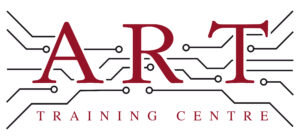Definition
Plated Through Hole is a manufacturing technique used in electronics to create conductive pathways through printed circuit boards (PCBs). This process involves plating the walls of drilled holes with metal, allowing electrical connections between different layers of the PCB. It is essential for mounting components securely and ensuring reliable electrical connections. Plated through holes are a fundamental component in the assembly and functioning of many electronic devices.
How It’s Used in the Industry
In electronics assembly, Plated Through Hole technology is applied during the PCB manufacturing process. First, holes are drilled into the PCB where components will be placed. Next, these holes are plated with a conductive material, usually copper, which creates a pathway for electrical signals. During soldering, components are inserted into these plated holes and soldered to secure them in place. This method is crucial for both beginners and experienced technicians, as it enhances the durability and reliability of electronic assemblies, ensuring they meet industry standards.
History & Origins
Plated Through Hole technology became common in the 1960s as the demand for more complex electronic circuits grew. Initially developed for military applications, it quickly spread to consumer electronics. The establishment of industry standards, such as those by IPC (Institute for Printed Circuits), helped formalise the process and improve quality control. Advances in drilling and plating techniques further enhanced the reliability and efficiency of PCB manufacturing, making plated through holes a standard practice in the industry.
Variations
There are several variations of Plated Through Hole technology, including blind and buried vias. Blind vias connect outer layers of a PCB to inner layers without going through the entire board, while buried vias connect only inner layers. These variations differ from traditional plated through holes, which extend fully through the PCB. Understanding these differences is essential for learners, as they impact design choices and manufacturing processes in modern electronics.
Modern Applications
Today, Plated Through Hole technology is widely used in the production of both traditional through-hole and surface mount devices. It plays a crucial role in ensuring the quality and reliability of electronic assemblies, particularly in applications requiring robust connections. Furthermore, compliance with IPC standards is vital for manufacturers, as it ensures that products meet industry expectations for performance and safety. This technique remains relevant in professional training, preparing technicians for real-world applications in electronics assembly and repair.
Practical Tips & Training
When working with Plated Through Hole technology, it’s important to ensure proper safety measures, such as wearing protective eyewear and following guidelines for handling chemicals used in plating. Inspecting plated holes for quality is essential, using tools like magnifying glasses or microscopes to check for defects. Structured training and certification in electronics are crucial for understanding these processes, as they equip technicians with the skills needed to maintain quality and adhere to industry standards.


